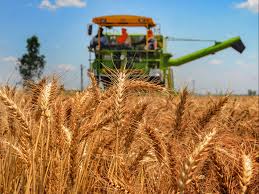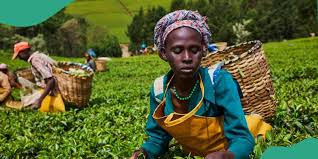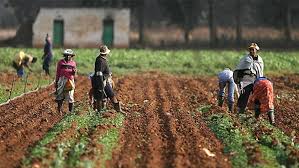Credit and input subsidy can be defined as the timely provision of agricultural credit and inputs to farmers at a price lower than the prevailing market price to make them affordable to peasant farmers. In Nigeria, two schools of thought exist on credit and input subsidy.
The first school contends that the government should provide agricultural subsidy for both credit and farm inputs to minimise production costs, while the second school argues that providing agricultural subsidy for credit and inputs should be discouraged.
Read Also: Gray Leaf Spot (Stemphylium spp) – Symptoms and Damage Control
Argument in Favour of Subsidy on Credit and Inputs to Farmers

1. High Productivity: It is argued that when credit and inputs for agriculture are subsidised, peasant farmers will be able to obtain more inputs with a given sum of money. For example, if a farmer has ₦100,000 to buy inputs that cost ₦5,000 per unit, only 20 units can be purchased.
However, if the government subsidises the sale of inputs, reducing the cost to ₦2,500 per unit, the farmer will be able to buy 40 units with the same amount of money. This increase in inputs allows for higher production, and at the end of the farming season, the output could double if there were no subsidy.
2. Increase in Income to Farmers: When credit and farm inputs are subsidised, the cost of production is reduced, allowing more produce to be generated with the same financial resources. As a result, the revenue accruable to farmers increases compared to when inputs are not subsidised.
With higher income, farmers will have more resources to meet other basic needs, improving their living standards. Increased yield also leads to greater availability of agricultural produce, which the government could purchase for storage and release during the off-season, ensuring food security and stable prices.
3. Reasonable Price of Commodity to Consumers: When credit and agricultural inputs are subsidised, farmers produce at a lower cost. This, in turn, can lead to lower selling prices, benefiting not just the farmers but also consumers, who can purchase goods at more affordable rates.
Additionally, subsidies encourage capital-intensive agriculture, leading to the cultivation of more land, which creates employment opportunities in processing and marketing agricultural produce.
4. Development Benefits: Many development economists consider agricultural input subsidies desirable. Farm input subsidies help stimulate desired resource allocation, income distribution, and serve as a tool for cushioning farmers against inflation in production costs. They also help to compensate for market distortions and act as an incentive for new entrants into farming investment.
Furthermore, in light of the protective agricultural policies in developed countries, governments in less developed countries need to support their farmers, especially since agricultural production is vulnerable to weather conditions and farmers lack political influence.
To raise farmers’ income, governments may either increase producer prices or lower input costs, with the latter often providing better results for the same expenditure.
5. Adoption Argument: Credit and interest rate subsidies are necessary to induce farmers to adopt formal credit and use it to purchase modern productive inputs. This argument suggests that small farmers will not borrow from formal credit sources unless low rates are charged and that they will not adopt profitable new technology unless special inducements are provided.
Proponents argue that low interest rates are needed to offset the uncertainties associated with adopting new technologies. Additionally, cheap credit policies for small farmers also address equity and income transfer objectives, with policy makers advocating low interest rates on agricultural loans as a means to transfer additional purchasing power to rural poor farmers.
6. Encouragement for Youths to Remain in Rural Areas: Subsidising agricultural credit and inputs can discourage rural-urban migration among young people who seek white-collar jobs in urban centres. When agriculture becomes profitable and less stressful, rural youths are more likely to remain in their communities, where they can earn more.
The income generated from agriculture allows them to purchase attractive items such as televisions and motorcycles that often draw them to urban areas. Additionally, subsidies on credit and inputs can contribute to poverty alleviation and promote rural development.
Read Also: Recommended Number of Ruminant Animals per Housing Unit for Fattening
Arguments Against Subsidising Credit and Inputs for Farmers

Many governments have implemented subsidised credit and input programmes to expand credit for the poor, based on the belief that they cannot afford market interest rates, are seen as high-risk by formal lenders, and are exploited by informal lenders. However, these justifications are either unsubstantiated or only partially correct, as explained below:
1. Farmers Need Not Be Bribed: Farmers do not need to be enticed with cheap credit or subsidised inputs to adopt profitable innovations if there is a satisfactory market for their additional output. Extension workers can often induce farmers to finance new inputs or tools with their own resources.
It is questioned how long cheap credit and subsidised inputs can be sustained. Since such a policy cannot last forever, it is not advisable to begin what the government cannot maintain in the long term.
2. Discouraging Both Savings and Flow of Credit: Economists generally agree that low interest rates for small farmers are difficult to justify, as they discourage savings and reduce the flow of credit. Such low rates fail to promote the most productive use of credit. Moreover, low credit rates mean that these programmes cannot be self-sustaining, relying instead on continued government support, which has serious financial implications for the state.
3. Demand Will Not Equal Supply: According to Adams, low interest rates often result in credit demand exceeding the supply of loanable funds. As a result, lending agencies select borrowers with excellent credit ratings. In Nigeria, small farmers typically do not have excellent credit ratings, leading to the credit being allocated to others while small farmers are denied access. Additionally, low interest rates and credit regulations distort resource allocation and can lead to political patronage, with small farmers suffering the most.
4. Siphoned Off into Other Investments: When credit rates are subsidised, they are lower than in other sectors of the economy, leading to farm credit being redirected to unrelated investments. This means the subsidy does not benefit the intended recipients small farmers and has little effect on agricultural production.
Experience over 20 years shows that subsidised formal credit rarely reaches the poor, with only 5% of farms in Africa and 15% of farms in Asia and Latin America accessing formal credit. Subsidised credit often benefits the non-poor instead.
5. Investment Policy Distortion: Subsidised interest rates may distort farmers’ investment decisions, as the true cost of capital is not reflected in their transactions. This may cause farmers to shift from labour-intensive practices to capital-intensive ones, leading to increased managerial tasks. Furthermore, cheap credit can encourage wasteful capital use or premature consumption, which reduces capital formation in rural areas.
6. Corruption: The high demand for subsidised credit typically exceeds supply, necessitating credit rationing. This creates opportunities for favouritism, bribery, and other forms of corruption. Credit institutions, under pressure from borrowers, may also face administrative challenges.
Lending institutions providing credit at subsidised rates may become vulnerable to political influence and insufficient compensation, forcing them to focus on larger loans at the expense of small farmers. This situation can lead to difficulties in raising capital, as the institution is unable to offer attractive interest rates to investors.
Do you have any questions, suggestions, or contributions? If so, please feel free to use the comment box below to share your thoughts. We also encourage you to kindly share this information with others who might benefit from it. Since we can’t reach everyone at once, we truly appreciate your help in spreading the word. Thank you so much for your support and for sharing!
Read Also: 4 Steps to help an Orange Tree Produce Sweet Oranges

